Rested, washed, two sets of gears in perfect working order, and myself sporting a new and rather drastic haircut… we left Ibague in the baking morning sunshine, excited to ride the old La Linea road to Salento over the next few days. The dirt road is based on an ancient trade route and has since been replaced with a well engineered dual carriageway that we could see below us in the valley. With parts of the pass now closed to everyone except cyclists and motorbikes, it has become a classic bucket list route for many Colombian bike tourists. Famed for it’s wax palms, beautiful panoramas, an active volcano (not the one from our previous posts, this one hasn’t erupted since 1180), and associated geothermal springs, it was billed to be the stuff that bike touring dreams are made of.

So far we had been impressed at the beauty and scale of Colombia without following any famous routes, just picking our own way, so we were keen to see how our own concoctions compared. After getting a bit lost/confused with the road layout leaving Ibague, we found the unassuming beginning of the route peeling off a small village and under two puddly tunnels. Once we got going on the first climb we found ourselves weaving beautifully along the side of the hill with a gradient that felt comfortable for an all day climb, and on the smoothest off road surface we’ve encountered so far. Our bike touring dreams were coming true. The surface was mostly dry, but we did come across a small patch of ‘peanut butter mud’ and some muchachos throwing rocks into the ruts to try and enable their truck to get through. Once again a demonstration of the Colombian ‘can do’ and ‘we’ll fix it’ attitude!
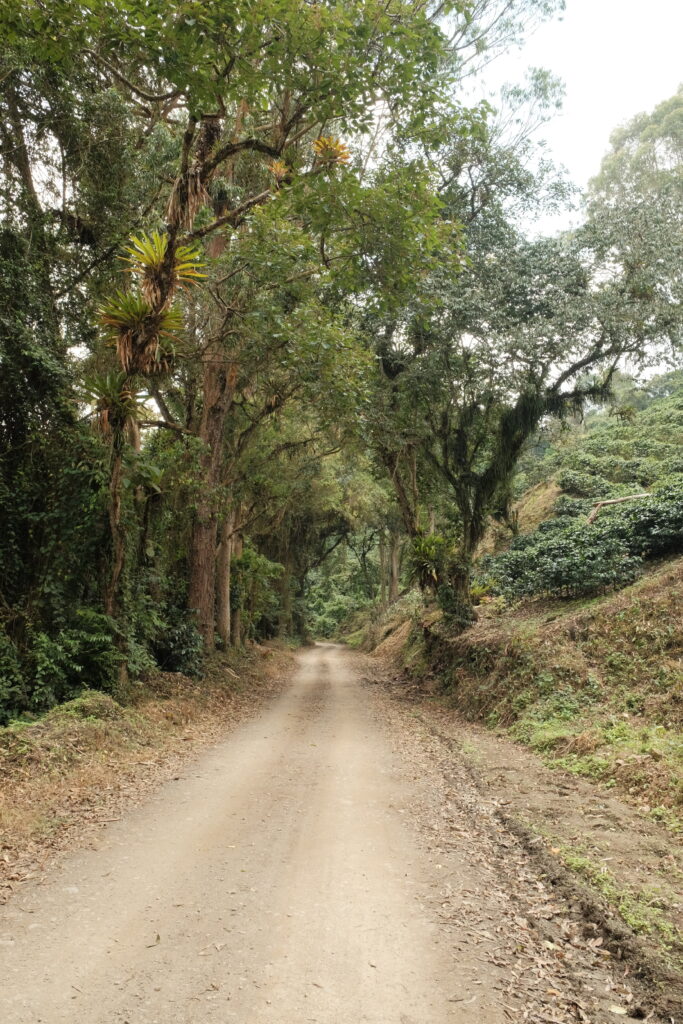

We had been in touch with another bike tourist Greg Brown and we expected to pass him coming the other way sometime this morning. As it got closer to lunchtime, we wondered what had happened to him. Eventually we found him near the summit of the first climb with his bike splayed across the floor, front wheel off with the tyre and tube dismantled. The bead of his front tyre had delaminated from the casing and he’d been waiting for glue to dry, frustrated he wasn’t carrying dental floss to sew it up (cycle tourists are resourceful folk!) He said it was his first mechanical of the trip, which made us feel bad for 2 bent mech hangers in less than 2 weeks! He offered us our first bocadillos (a sweet treat made from guava pulp and sugar cane) and we swapped stories of our trips so far. He’d ridden from Alberta in Canada and told us about the place he’d camped last night on a restaurant verandah above the geothermal pools. He told us the owner would be expecting us tonight! We bade him farewell and a safe descent. He called us later that evening to tell us that his fix had not held and he’d had to zip tie the tyre which was problematic for a bike with rim brakes! He’s had to take the front brake off and descend slowly with just the rear brake, arriving in Ibague in the dark. His Warmshowers host Jesus had helped Liam with the aforementioned bike blowtorching and must have been wondering what was up with these Gringos and their poorly maintained bicicletas!
We stopped for almuerzo in Tapias, not seeing anywhere immediately obvious we asked locals who directed us to a small cafe next to the basketball court. It was both the first 3 course lunch of the trip and the cheapest at $8,000 Colombian pesos (about £1.50!). A good feed was what we needed to get up the rest of the climb.
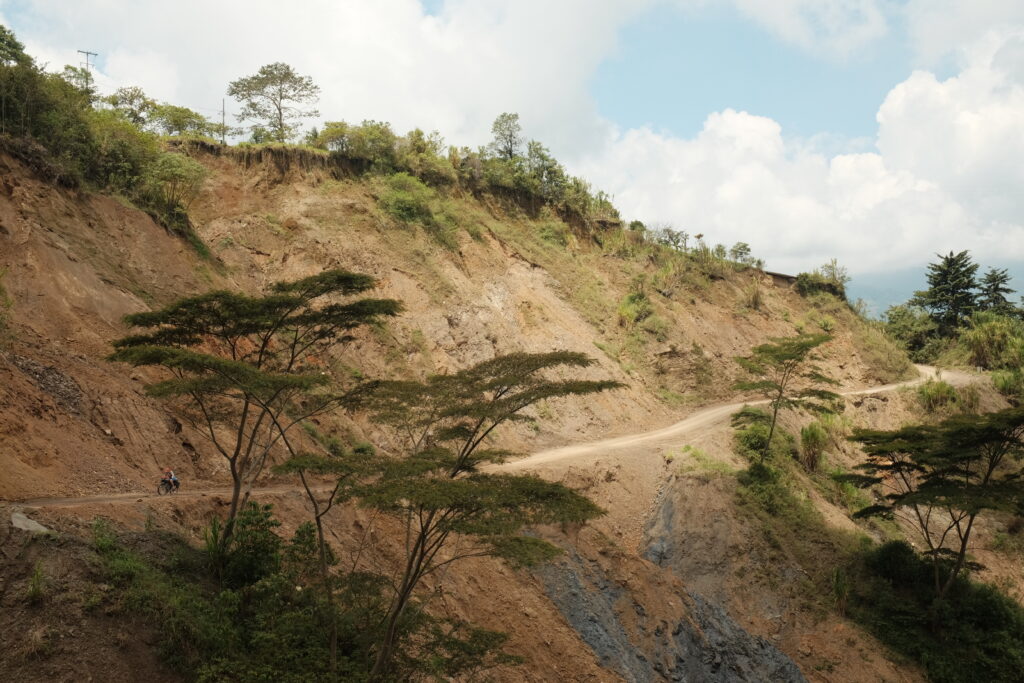
The climbs of the first day were just beautiful. With good visibility out across the valley you could always see the route ahead of you (usually above us) and the road behind us (usually below us).I was blown away by how many orchids were growing in the undergrowth at the side of the road. There were also many cockerels and a few farms had cock fighting rings out front with their prize cockerels tethered up alongside. Chickens don’t seem to have any natural predators here and the dogs leave them alone, so there are so many hens criss crossing and scraping in the road. We played the usual dog roulette with each farm we passed, they’d either bark and chase or stay fast asleep. We were also passed by a rather impressive all terrain bus which both Liam and I stopped to take photos of, I think we were the tourists here.

The smell of hydrogen sulphurs (rotten eggs) and yellow deposits in some of the streams were indicators that we were nearing in on Volcano Machin. We passed a waterfall and resisted the temptation to dunk knowing that the warm pools were not far away now. The owner was indeed expecting us, but a little disappointed that our Spanish was not as good as Greg’s!
The pools were just finishing being cleaned, so we bought a beer and went for a walk to see where the warm water was getting piped from the stream. Paddling in the warm water was a bizarre sensation. We had a dip in the hot pool before dinner which was just glorious for tired legs. The owners hens were roosting in a perch in the undergrowth above the road and her dog ‘Colonel’ was as excited for dinner time as we were. We mastered another hard/freestanding pitch of our tent and it was the chilliest night we’ve experienced so far, although it was pleasant change to be in the tent without getting hot and clammy.



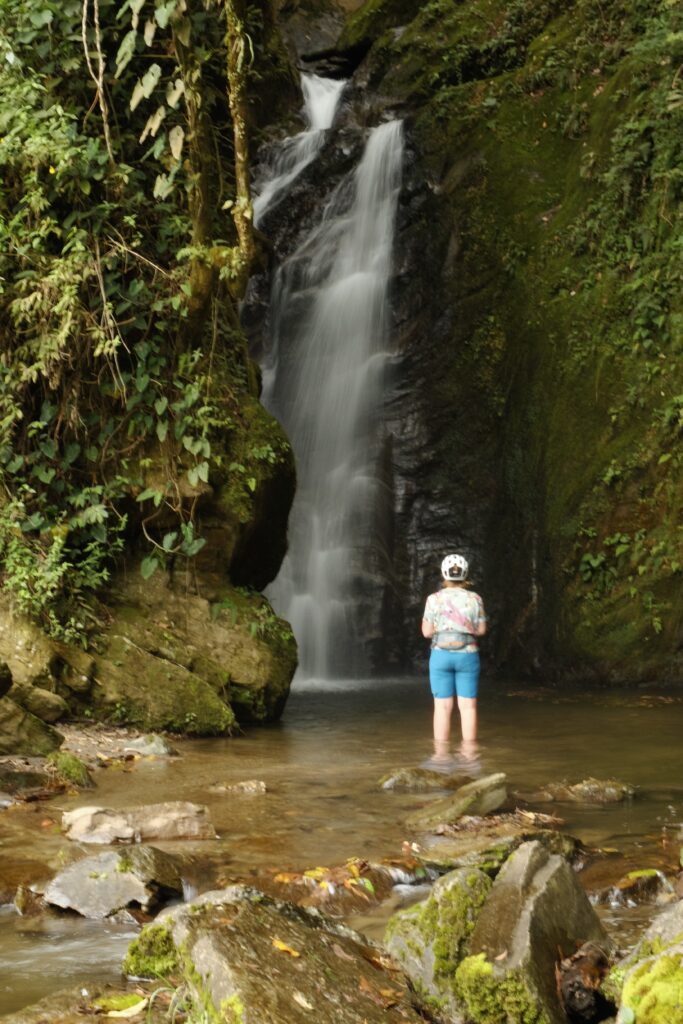
We woke up early thanks to the cockerel and a rather beefy all terrain bus and decided to try a swift hike up to the volcano crater, it looked very close on open street map. We went through the yard of a toothless farmer who was just pulling on his trousers when his dogs kicked up a racket at our presence. He was surprised to see two gringos and so early, but was friendly and pointed us in the right direction.
The walk was steep, alternating between the river canyon, farm fields and ancient forest. It became apparent that it was a lot further than it looked on the map (contour lines were invented for a reason) and aware that we still had a long way to ride that day, I decided to turn back leaving Liam to trot on. We enjoyed a warm pre-breakfast swim and hot tub while our host prepared a two course breakfast of chicken soup followed by huevos (eggs), arroz (rice) and plantain. It was quite a leisurely breakfast and, worryingly, it was about 11am before we were through Toche and beginning the first ‘real’ climb of the day.

The first day had lulled us into a false sense of gradient related security and the climb out of Toche was back to the characteristically Colombian chunky roads and punchy inclines! Sapping our breath and our legs as we winched ourselves slowly up and up. We started to see a few tall wax palms cropping up on hill tops and ridges and they gradually became more numerous as the day grew on. These unusually tall trees grow up to 60m tall and are native to the humid mountain forests of the Andes.

With parts of the trees used for everything from candles to religious festivals, more recently they are threatened by deforestation and disease and all species are under threat with a few listed as endangered. I felt very conflicted, keen to enjoy the unique surroundings but stopping for snacks and photos was done with an underlying feeling of haste; there was a long way to go and the climb was taking us longer than expected.
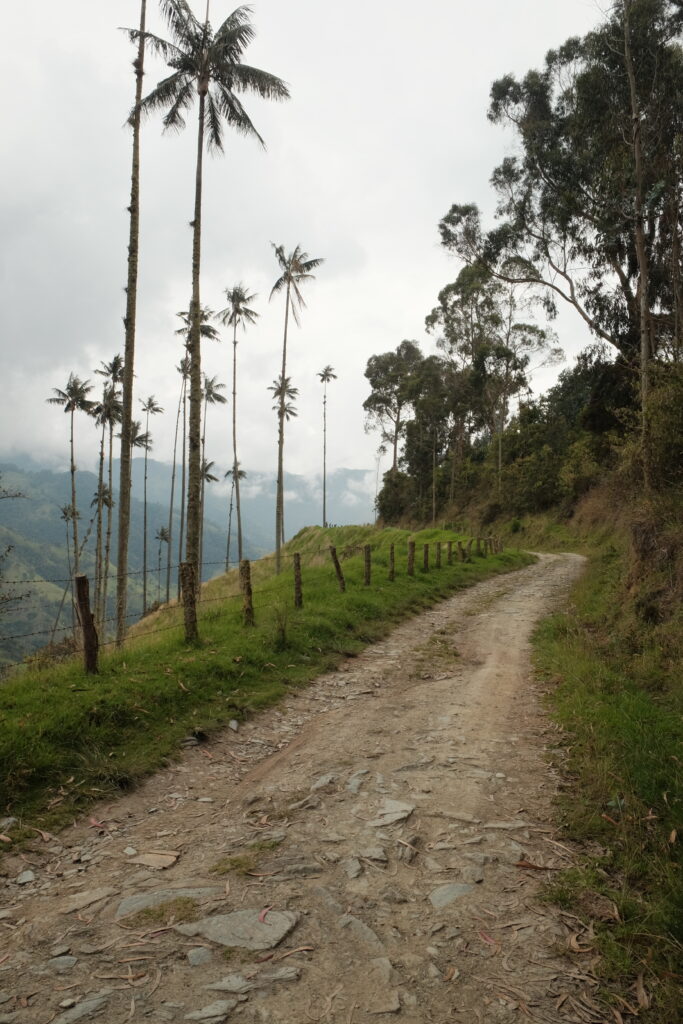

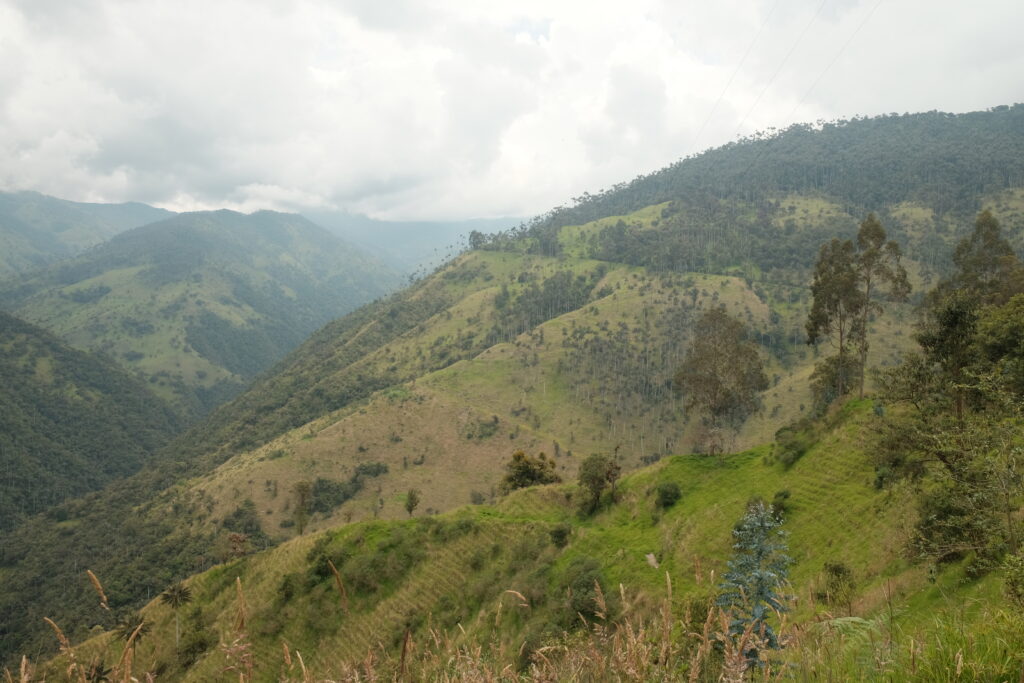
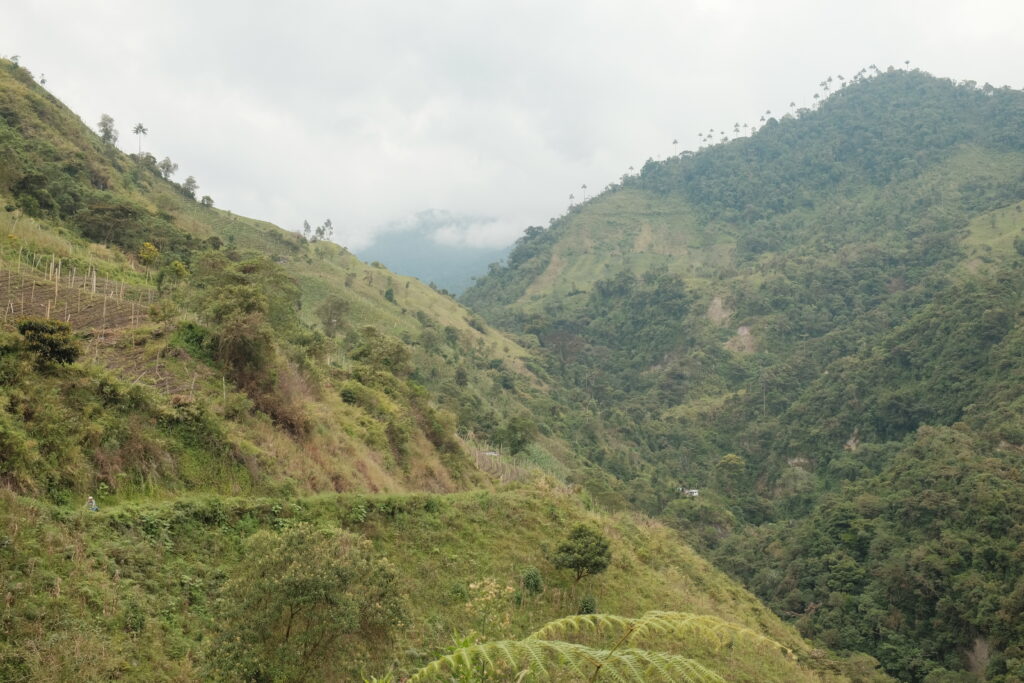

Finally up and over the climb and at the bottom of the final ascent, we saw a small and unexpected cafe, we stopped for a snack of aqua de panella, arepas, pan and queso. If drinking liquid sugar cane didn’t recharge our legs, nothing would!
Well, it didn’t. Tired and heavy legs reluctantly started winching again, although the gradient was now less severe. Over our snack, we discussed our progress (or lack of) and decided to try and wild camp before going over the final pass at Linea. This would remove the pressure of getting up and over in daylight and this remote landscape offered some of the best wild camping prospects we’d seen so far (wild camping in Colombia is hard). So at about 3,000m above sea level, and tucked away from the road and nearby farm, we pitched up. We quickly huddled inside the tent to seek refuge from the bitey things living in the grass and tucked into our dinner of bread and tuna.
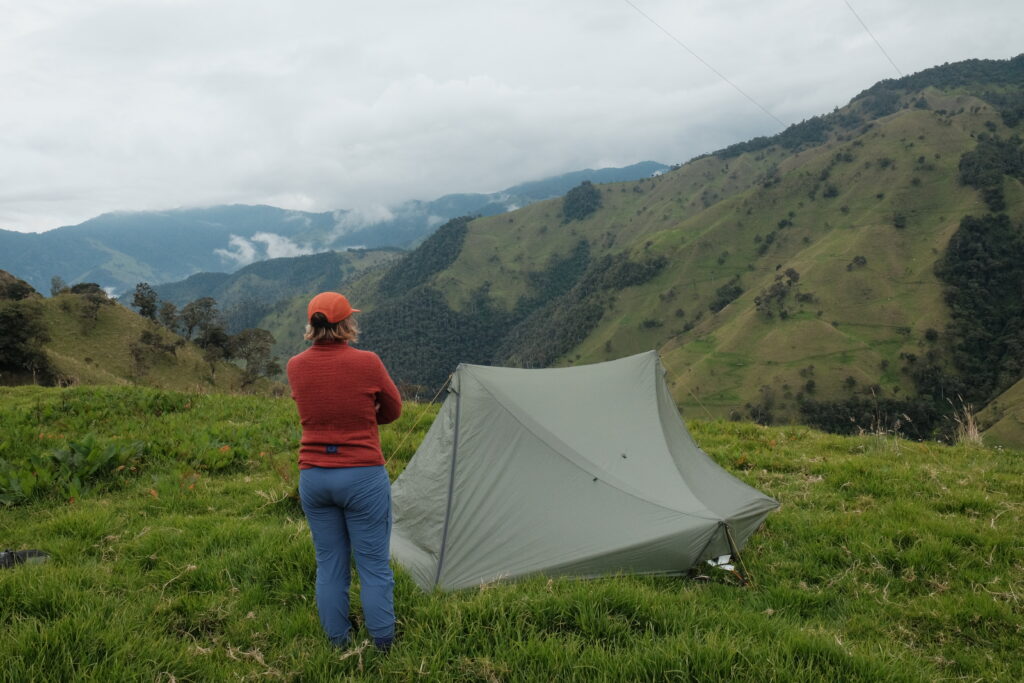
It turned out our flat patch of land wasn’t that flat and the night was punctuated by Liam sliding into me and flashes of lightning (but no thunder). It started raining at around 3am but wasn’t anywhere near as heavy as the downpours we have experienced, which was a small mercy. Keen to not attract any unwanted attention we packed up the tent early and went to cook up our porridge on the porch of an abandoned building.

It turns out the final summit wasn’t that far away, fuelled by a night of terrible sleep and a fully belly of oats, we were quickly over Linea and hurtling down towards the colonial coffee town of Salento. It seems that OSM really isn’t that accurate here. As we left the wax palms and open valley behind we rode into the clouds and pine forests. The descent is about 20km long losing about 1,400m of altitude.
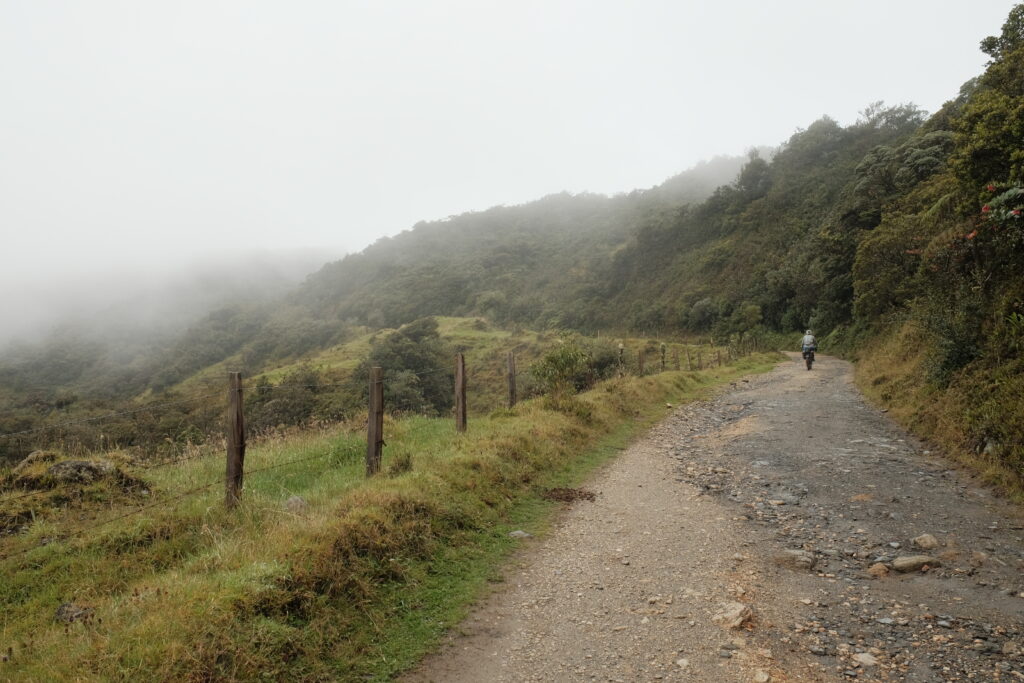
About 8km from the bottom I caught up with a static Liam who was making his ‘uh oh’ face. His Tailfin had broken in half and his non drive side pannier had hit the floor. He managed to stabilise it with a zip tie but it was wobbling around like the tooth of an 8 year old who expects to be 50p richer by the tooth fairy by the morning. He walked the last 8km while I went on an advance bakery reconnaissance mission.
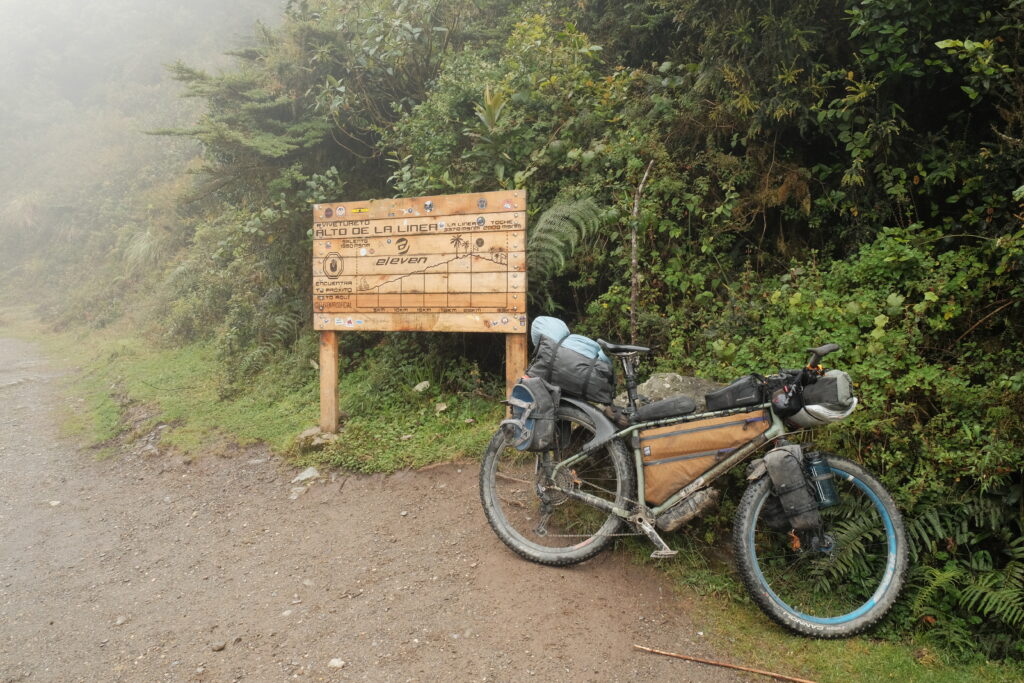
Salento is beautiful colonial town famous for its colourful streets and coffee farms. It is also a tourist hotspot and it was bizarre to hear English being spoken after so long in the rural towns and villages. We pitched up at the campsite where everyone was French, which turned my brain into language spaghetti! After lunch, we set about making a plan of what to do about Liam’s now completely broken rear rack. I was also keen to replace my Tailfin having lost all confidence in the system.


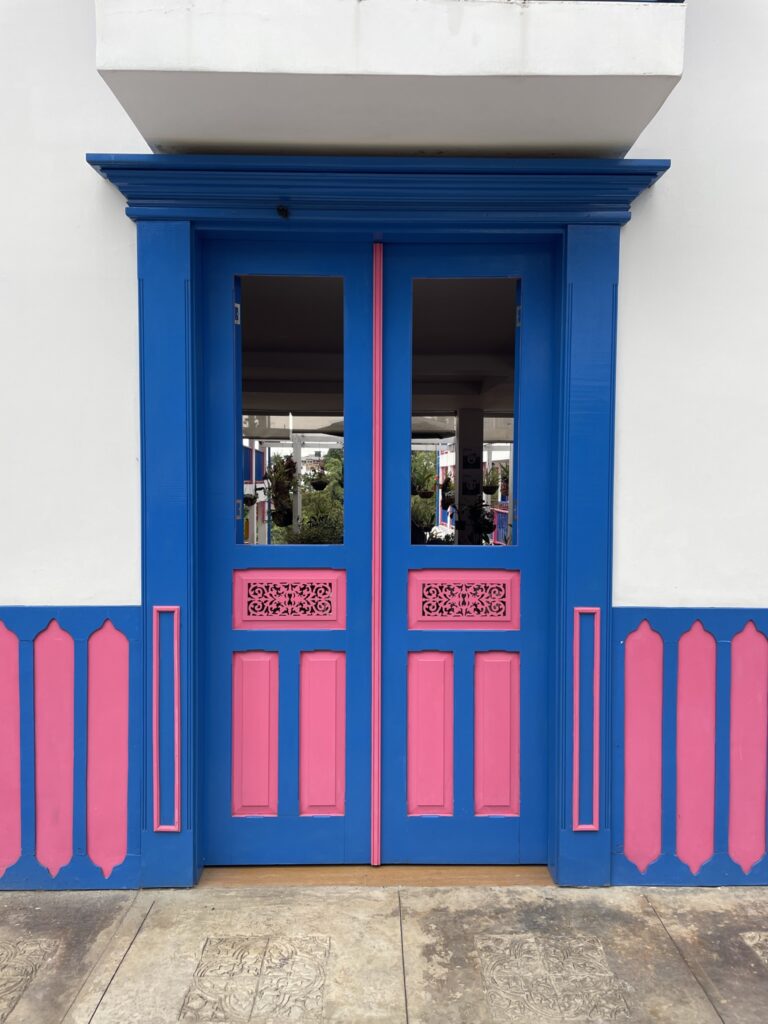
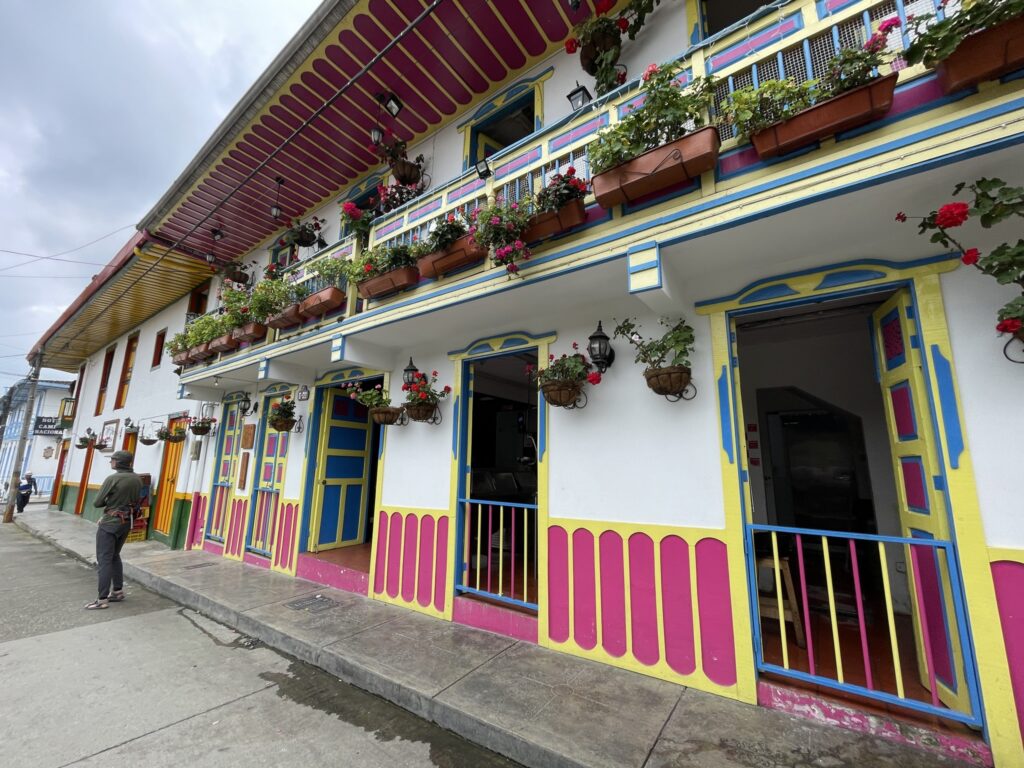


Sorry to hear about your various mechanical woes, El and Liam. However, the wonderful pictures and friendliness of the Columbians – not to mention the cheap nosh and lodgings – must be making up for these niggles.
Having just binge-read your blogs so far I feel sure that this will be a journey of a lifetime.
Pingback: Once more over the Divide - drawinglinesonmaps.com